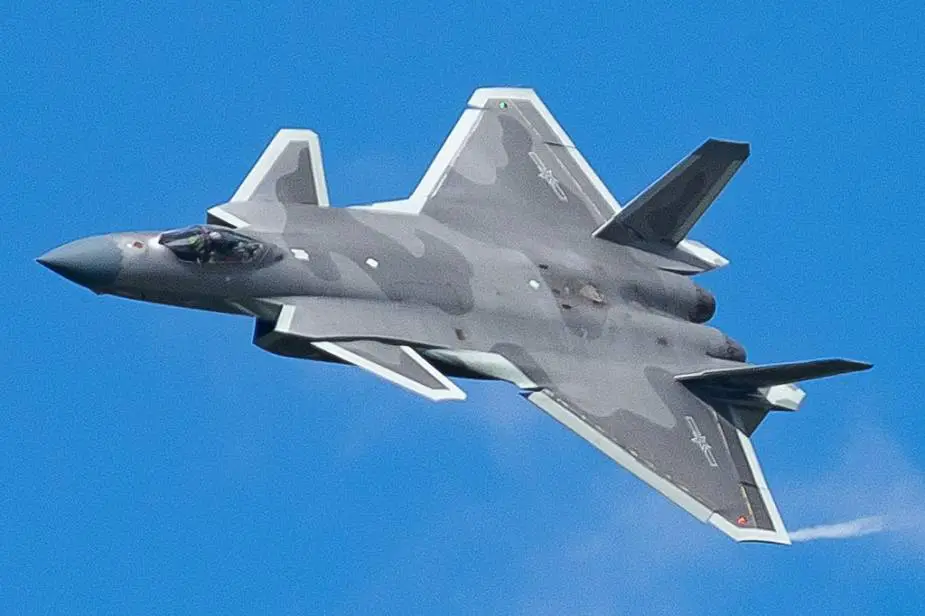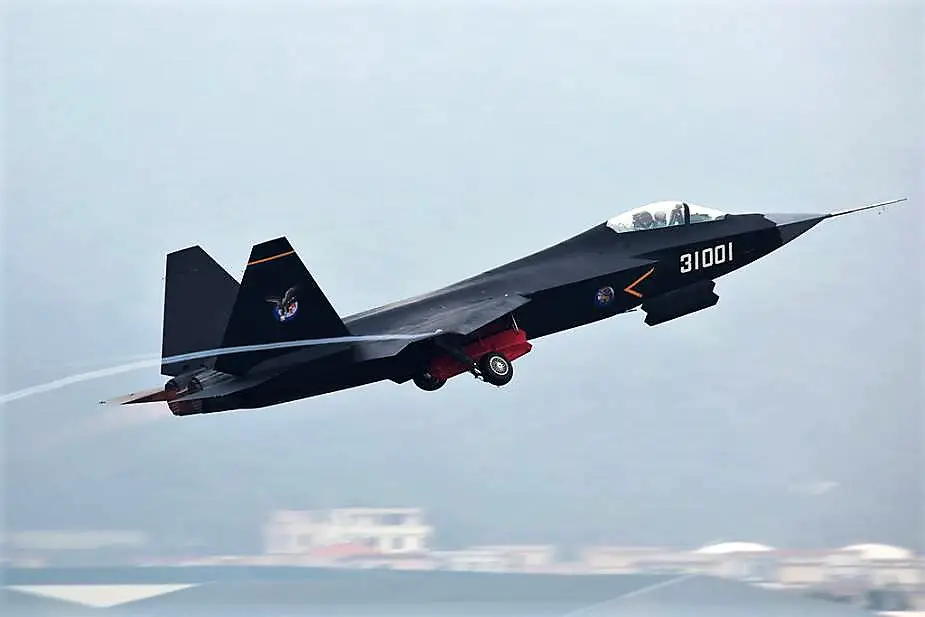According to Liu Xuanzun in Global Times, China's aviation industry has started applying world-leading 3D printing technologies on new-generation warplanes, with 3D printed parts widely used on the newly developed Shenyang FC-31 stealth fighter aircraft that made its maiden flight not long ago, said a leading developer.
Follow Air Recognition on Google News at this link
 J-20 at Changchun AirShow 2022 (Picture source: Wikipedia)
J-20 at Changchun AirShow 2022 (Picture source: Wikipedia)
3D printed parts enjoy advantages including high structural strength, lightweight, long service life, low cost and fast manufacturing. "We are applying 3D printing technologies on aircraft on a large scale at an engineering level, and we are in a world-leading position," Doctor Li Xiaodan, a member of the Luo Yang Youth Commando at Shenyang Aircraft Company's craft research institute, told China Central Television (CCTV) on November 27. With the growing demands of new-type warplane development in terms of weight reduction, lifespan extension, cost control and rapid response, previous production approaches reached a ceiling by 2013, and the Luo Yang Youth Commando was established to promote a breakthrough, CCTV reported.
The team is named after Luo Yang, head of the production of China's J-15 carrier-based fighter jet who died of a heart attack on November 25, 2012. The Luo Yang Youth Commando mastered the 3D printing technologies, using the latest 3D printing equipment to produce components used by China's new-generation warplanes, CCTV reported.
Compared with conventional manufacturing methods, which need to use rivets or welding to connect parts together, 3D printing builds an integrated part, which enjoys a higher structural strength, which also leads to a longer service life. It also enables manufacturers to use no extra materials, which makes the part lighter. Another advantage is that 3D printing is fast, and parts can be quickly manufactured, which makes logistics support simpler and less costly, he said.
The Shenyang Aircraft Company, a subsidiary of the state-owned Aviation Industry Corporation of China (AVIC), developed China's second stealth fighter jet, the FC-31, which is available for export and is also expected to be further developed into China's next-generation carrier-based fighter jet. The Shenyang FC-31 Gyrfalcon, is a prototype mid-sized twinjet 5th-generation fighter aircraft developed by Shenyang Aircraft Corporation (SAC). The official nickname published by SAC is "Gyrfalcon", though it has also been referred to as the "F-60" or "J-21 Snowy Owl" in some media reports, or "Falcon Hawk" by some military enthusiasts. J-XX nomenclatures in the Chinese military are reserved for programs launched and financed by the People's Liberation Army, while the FC-31 plane was developed independently as a private venture by the aircraft manufacturer. While the Chengdu J-20 stealth fighter was officially endorsed by the People's Liberation Army Air Force after Chengdu Aerospace Corporation's proposal won the PLAAF bid for the next-generation jet fighter, Shenyang Aircraft Corporation pressed on and developed a private project aiming to secure potential export customers.
 Shenyang FC-31 (F60) Gyrfalcon at AirShow China 2014 in Zhuhai (Picture source: Wikipedia)
Shenyang FC-31 (F60) Gyrfalcon at AirShow China 2014 in Zhuhai (Picture source: Wikipedia)
















